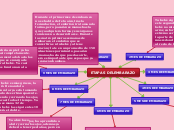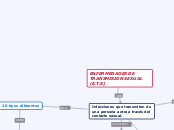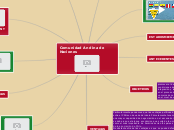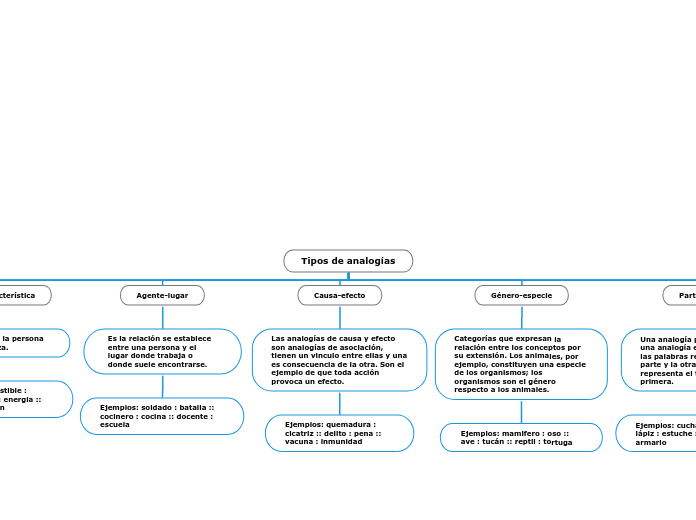QUISTES ARACNOIDEOS
The Solar System is the gravitationally bound system of the Sun and the objects that orbit it, either directly or indirectly. Of the objects that orbit the Sun directly, the largest are the eight planets, with the remainder being smaller objects, the dwarf planets, and small Solar System bodies.
Etiología
Saturn is known most for its rings.
Galileo Galilei first thought it was an object with three parts: a planet and two large moons on either side.
Not knowing he was seeing a planet with rings, the stumped astronomer entered a small drawing — a symbol with one large circle and two smaller ones — in his notebook.
The rings are made of ice and rock and scientists are not yet sure how they formed. The gaseous planet is mostly hydrogen and helium.
Enfermedades genéticas están asociadas con:
A planet's day is the time it takes the planet to rotate or spin once on its axis.
Write down Saturn's day measured in Earth days.
Alta incidencia de quiste aracnoideo, incluyendo:
Enfermedad Poliquística
autosómica dominante
Neurofibromatosis tipo I
Se encuentra una predominancia
Género masculino
En relación de 3:1
Clasificación
Uranus is an oddball. It has clouds made of hydrogen sulfide, the same chemical that makes rotten eggs smell so foul.
It rotates from east to west like Venus. Its tilt causes extreme seasons that last 20-plus years, and the sun beats down on one pole or the other for 84 Earth-years at a time.
Methane in the atmosphere gives Uranus its blue-green tint. It also has 13 sets of faint rings.
Secundarios
A planet's day is the time it takes the planet to rotate or spin once on its axis.
Write down Uranus's day measured in Earth days.
Se desarrollan como resultado de una lesión cerebral:
Tumores
Meningitis
No son tan comunes como los quistes primarios
Primarios
Ocurridas durante las primeras semanas de gestación
Son el resultado de anomalías del desarrollo del:
Médula espinal
Cerebro
Están presentes al momento de nacer
Causas
Neptune is about the size of Uranus and is known for supersonic strong winds.
Neptune is far out and cold.
The planet is more than 30 times as far from the sun as Earth.
Neptune was the first planet predicted to exist by using math, before it was visually detected. Neptune is about 17 times as massive as Earth and has a rocky core.
Pueden estar asociados a otros trastornos primarios:
Neptune has thirteen moons that we know of and one more waiting for confirmation.
The largest moon is slightly smaller than Earth's Moon and has active volcanoes which erupt like geysers and eject nitrogen frost over the surface.
Name this moon and at least 4 others.
Aracnoiditis o la ACC (agenesia del cuerpo calloso)
Síndrome de Marfan
Los expertos creen que la mayoría de los quistes aracnoideos son:
A planet's day is the time it takes the planet to rotate or spin once on its axis.
Write down Neptune's day measured in Earth days.
Malformaciones del desarrollo durante la gestación
Trastornos congénitos
Se desconocen las causas exactas
Generalidades
It was once considered a planet but in August 2006 the International Astronomical Union (IAU) downgraded the status of Pluto to that of “dwarf planet.”
Pluto is unlike other planets in many respects. It is smaller than Earth's moon; its orbit is highly elliptical.
It's a cold, rocky world with a tenuous atmosphere. Pluto is a very active ice world that's covered in glaciers, mountains of ice water, icy dunes, and possibly even cryovolcanoes that erupt icy lava made of water, methane or ammonia.
Quistes
How long does it take for Pluto to go around the sun?
¿Qué son los quistes aracnoideos?
Forman una cavidad extracerebral llena de:
Líquido con características similares al cefalorraquídeo
Son tumoraciones benignas congénitas
Tratamiento
Jupiter is a giant gas world that is the most massive planet in our solar system.
Its swirling clouds are colorful due to different types of trace gases.
And a major feature in its swirling clouds is the Great Red Spot, a giant storm more than 10,000 miles wide. It has raged at more than 400 mph for the last 150 years, at least.
Jupiter has a strong magnetic field, and with 75 moons, it looks a bit like a miniature solar system.
Mejor opción quirúrgica:
Fenestración de la cápsula del quiste
Tratamiento quirúrgico dependiendo de:
How long does it take for Jupiter to go around the sun?
Anomalías asociadas
Síntomas neurológicos que produce
Tamaño del quiste
Localización
Aspectos Epidemiológicos
Mars is a cold, desert-like place covered in dust. This dust is made of iron oxides, giving the planet its iconic red hue.
Mars shares similarities with Earth: It is rocky, has mountains, valleys and canyons, and storm systems ranging from localized tornado-like dust devils to planet-engulfing dust storms.
Localización más frecuente
Mars has two small moons.
Name these moons.
Quistes supraselares son casi el 9% - 10%
Fosa posterior son casi el 20% a 30%
Fosa media en casi un 50%
Se encuentra incidentalmente en:
How long does it take for Mars to go around the sun?
0.5% de las autopsias
Predominancia por el género:
A planet's day is the time it takes the planet to rotate or spin once on its axis.
Write down Mars's day measured in Earth days.
Masculino
Son aproximadamente el:
1% de las lesiones intracraneales expansiva
Exámenes auxiliares
Earth is a water world, with two-thirds of the planet covered by oceans.
It's the only world known to harbor life.
Earth's atmosphere is rich in nitrogen and oxygen.
Its name originates from 'Die Erde,' the German word for 'the ground.'
Earth may once have had two moons, nowadays it has just one.
De imágenes:
Ecografía prenatal
How long does it take for Earth to go around the sun?
Observa una estructura quística hipoecoica y homogénea sin flujo interno en la imagen con Doppler.
Puede identificar el quiste aracnoideo
Resonancia Magnética Nuclear
A planet's day is the time it takes the planet to rotate or spin once on its axis.
Write down the Earth's day in hours.
Permite decidir la estrategia del tratamiento mejor que con sólo la tomografía
Permite visualizar adecuadamente al quiste aracnoideo y sus relaciones anatómicas
Tomografía
Pierde su poder diagnóstico en los quistes aracnoideos espinales
Muestra una masa extra axial hipodensa con características similares al líquido cefalorraquídeo
Signos y síntomas
Venus is Earth's twin in size and has no moons.
Its surface has various mountains and volcanoes. Because of its thick, toxic atmosphere that's made of sulfuric acid clouds, Venus is an extreme example of the greenhouse effect. The average temperature on Venus' surface is 900 F (465 C).
Venus spins slowly from east to west, the opposite direction to most of the other planets.
The Greeks believed Venus was two different objects — one in the morning sky and another in the evening. Because it is often brighter than any other object in the sky, Venus has generated many UFO reports.
En niños mayores:
How long does it take for Venus to go around the sun?
Se puede presentar:
Desorden de la atención o ser hiperquinéticos
Problemas del comportamiento
Signo más frecuente
A planet's day is the time it takes the planet to rotate or spin once on its axis.
Write down Venus's day measured in Earth days.
Macrocránea que incluso se puede diagnosticar in utero
Síntoma más común:
Cefalea focal o generalizada
Fisiopatología
Mercury is the smallest, only a little bit larger than Earth's moon. Mercury has no moon.
It experiences dramatic changes in its day and night temperatures: Day temperatures can reach a scorching 840 F (450 C), which is hot enough to melt lead. Meanwhile, on the night side, temperatures drop to minus 290 F (minus 180 C).
It also has a very thin atmosphere of oxygen, sodium, hydrogen, helium, and potassium and can't break-up incoming meteors, so its surface is pockmarked with craters, just like the moon.
Desarrollo embriológico anormal:
Our Solar System has eight “official” planets which orbit the Sun.
Each planet is at a different distance from the sun. Name its position.
4. Para dar lugar a la formación del quiste aracnoideo
3. Se separan en forma aberrante
2. El cierre de la placa rómbica el líquido cefalorraquídeo fluye al espacio subaracnoideo
1. Líquido cefalorraquídeo esta sólo en los ventrículos









